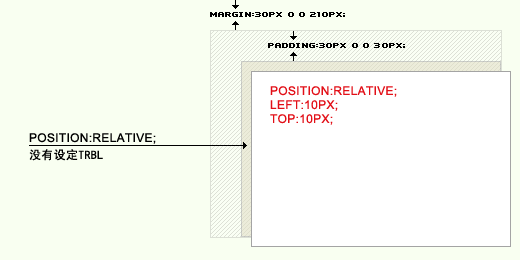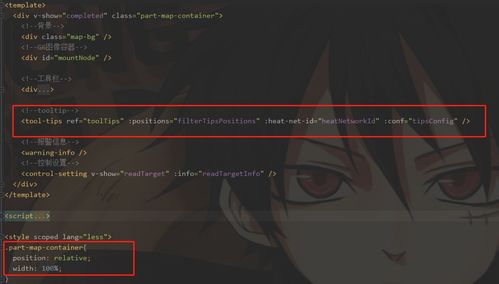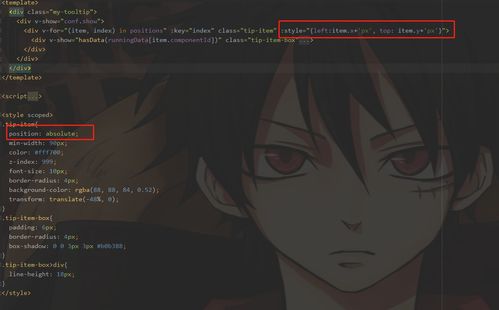cssabsolute, Introduction to CSS Absolute Positioning
CSS中的绝对定位(absolute positioning)是一种常用的定位方式,它可以使元素脱离正常的文档流,并相对于其最近的已定位的父元素或文档进行定位。以下是关于CSS绝对定位的详细介绍、使用方法以及示例:
1. 绝对定位的概念绝对定位使元素完全脱离文档流,释放自己的位置。元素通过定位后,会生成一个新的块级框,不再占据文档流中的空间。
2. 绝对定位的特点 脱离文档流:绝对定位的元素会脱离正常的文档流,不会影响其他元素的位置。 相对于最近的已定位的父元素或文档进行定位:如果元素的父元素没有设置定位属性,则该元素会相对于``元素进行定位。 可以使用`zindex`属性控制堆叠次序:通过`zindex`属性可以控制绝对定位元素的堆叠顺序。
3. 使用方法使用绝对定位需要满足两个条件:1. 父元素设置定位属性:一般建议给父元素设置`position: relative`,这样绝对定位的元素会相对于这个父元素进行定位。2. 子元素设置绝对定位:给子元素设置`position: absolute`,并使用`top`、`right`、`bottom`、`left`属性来定义元素的位置。
4. 示例代码以下是一个简单的示例,展示如何使用绝对定位:```html .container { position: relative; width: 200px; height: 200px; backgroundcolor: f0f0f0; } .absolute { position: absolute; top: 20px; right: 20px; width: 100px; height: 100px; backgroundcolor: red; }
```在这个示例中,`.container`设置了相对定位,而`.absolute`设置了绝对定位,并使用`top`和`right`属性来定位。
CSS Absolute Positioning: A Comprehensive Guide
Introduction to CSS Absolute Positioning

Absolute positioning is a powerful feature in CSS that allows you to place an element at an exact position within its containing block. Unlike relative positioning, which shifts the element relative to its normal position, absolute positioning ignores the normal document flow and can be used to create complex layouts.
Understanding the Basics

What is Absolute Positioning?

Absolute positioning is defined by the `position` property set to `absolute`. When an element is absolutely positioned, it is taken out of the normal document flow and can be placed anywhere within its containing block.
The Positioning Context

The containing block for an absolutely positioned element is its nearest positioned ancestor. If there is no positioned ancestor, the containing block is the initial containing block, which is the viewport.
The Positioning Properties

To position an element absolutely, you need to specify its position using the `top`, `right`, `bottom`, and `left` properties. These properties define the element's position relative to its containing block.
```css
.element {
position: absolute;
top: 50px;
right: 100px;
bottom: 50px;
left: 100px;
Advantages and Disadvantages of Absolute Positioning

Advantages

- Exact Positioning: Absolute positioning allows for precise control over an element's position.

- Layout Flexibility: It can be used to create complex layouts that would be difficult with other positioning methods.

- Layering Elements: Absolutely positioned elements can be layered on top of each other, creating a stacking context.

Disadvantages

- Document Flow: Absolutely positioned elements do not affect the layout of other elements, which can lead to issues if not managed correctly.

- Accessibility: Absolutely positioned elements can be difficult to navigate using keyboard or screen readers.

- Complexity: Overuse of absolute positioning can make the CSS code more complex and harder to maintain.

Practical Examples

Example 1: Centering an Element

To center an element both horizontally and vertically within its containing block, you can use the following CSS:
```css
.centered-element {
position: absolute;
top: 50%;
left: 50%;
transform: translate(-50%, -50%);
Example 2: Creating a Dropdown Menu

A dropdown menu can be created using absolutely positioned elements to position the menu items relative to the trigger button.
```css
.dropdown {
position: relative;
.dropdown-content {
position: absolute;
top: 100%;
left: 0;
background-color: f9f9f9;
box-shadow: 0px 8px 16px 0px rgba(0,0,0,0.2);
z-index: 1;
.dropdown-content a {
color: black;
padding: 12px 16px;
text-decoration: none;
display: block;
Best Practices

1. Use Absolute Positioning Sparingly

Absolute positioning should be used judiciously. Overuse can lead to complex and difficult-to-maintain code.
2. Maintain a Clear Structure

Always ensure that your HTML structure is clear and that absolutely positioned elements are nested appropriately.
3. Use Visual Tools

Use visual tools like the Chrome DevTools to visualize the positioning context and ensure that elements are positioned as intended.
4. Test for Accessibility

Always test your layout for accessibility, ensuring that absolutely positioned elements do not hinder the usability of the website.
Conclusion

CSS absolute positioning is a powerful tool that can be used to create complex and precise layouts. However, it should be used with caution and in conjunction with other positioning methods to ensure a robust and accessible website. By understanding the basics, advantages, and best practices of absolute positioning, you can leverage this feature to enhance the design and functionality of your web pages.





